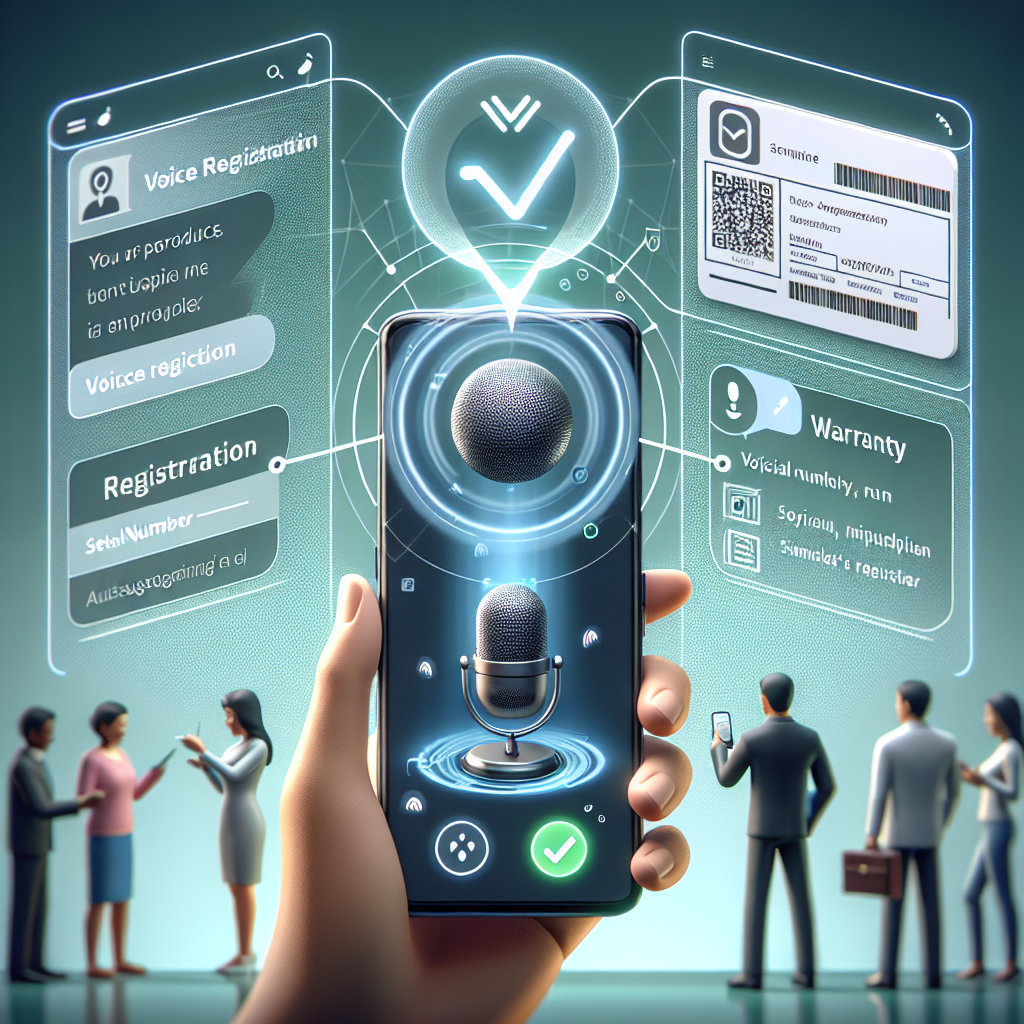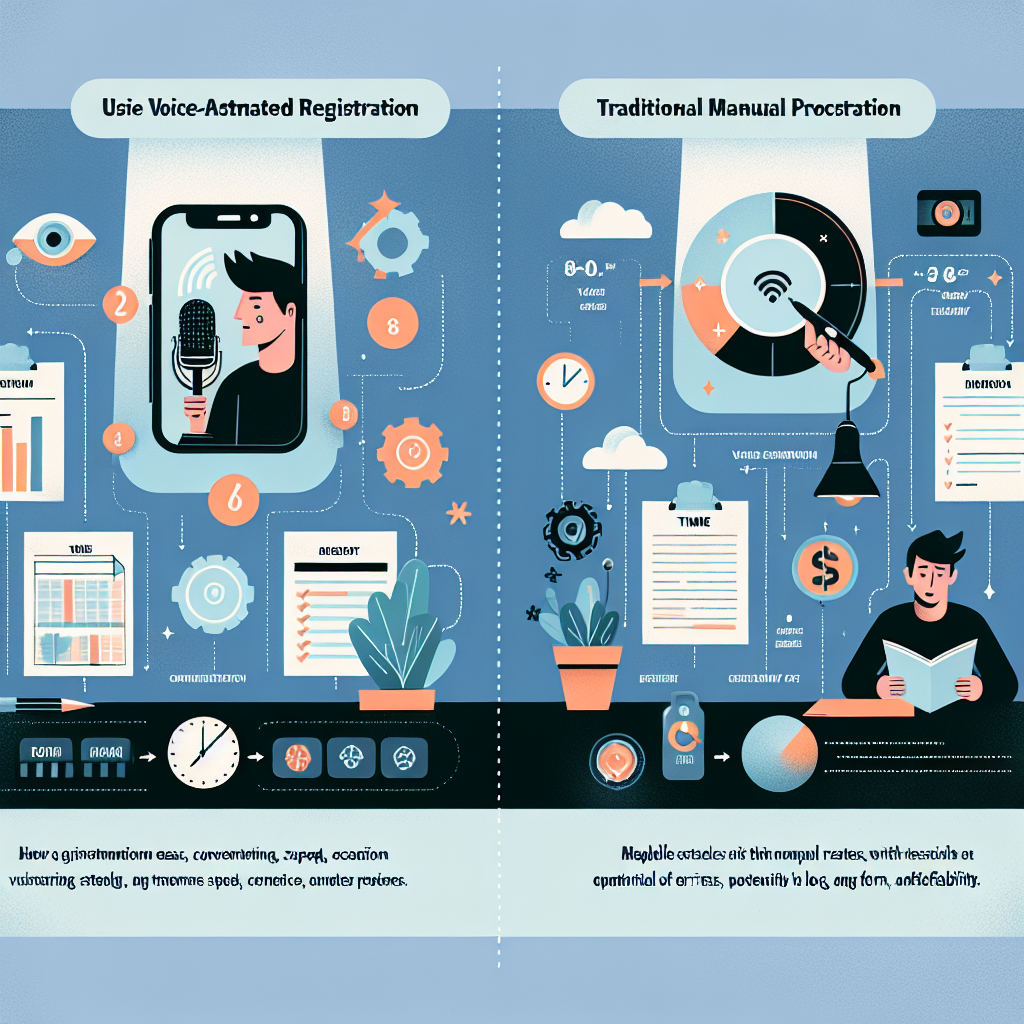
In the modern technology era, where the speed and ease of access are prioritized, Voice-Activated Product Registration has emerged as a game-changer. This innovative concept stands at the intersection of user-friendly customer service and cutting-edge technology. By leveraging the power of voice recognition and artificial intelligence, product registration processes have become more streamlined, efficient, and customer-friendly.

Voice-Activated Product Registration ensures a hands-free experience for customers, contributing significantly to consumer convenience. This system is intuitive, reducing the time spent on traditional registration methods and eliminating the usual hindrances in the process.
With an exponential rise in the adoption of voice-enabled devices such as Amazon's Alexa, Google's Nest Hub, or Apple's Siri, businesses are now focusing on incorporating voice-activated services into their products and services. Listeners, speakers, headphones, and even home appliances are turning "smart," paving the way for voice-controlled product registration processes.
Such convenience not only enhances the customer experience but also accelerates the entire registration process, giving businesses an upper-hand in customer satisfaction. Thus, the integration of voice technology in product registration is simplifying warranty processes, proving to be a win-win approach for both businesses and consumers.
Voice-activated product registration is the future of warranty management, making the process more streamlined for consumers and businesses alike. By utilizing voice-enabled technologies, many companies have seen significant improvements in registration rates and customer satisfaction.
The first significant advantage is efficiency. Voice activation eliminates the tedious form filling most customers dread while registering products. This hassle-free process reduces the time taken from minutes to mere seconds. A study from arXiv.org revealed that voice activation can decrease registration time by up to 65%.
Interestingly, the increase in product registration rates has a two-fold benefit. Customers benefit from ensured warranty services while companies benefit by gaining insights into their consumer base, assisting in sharp, data-driven marketing strategies. A report from Forrester indicates a rise in registration rates by 30% with voice activation implementation.
Moreover, voice activation ensures a significant boost in user satisfaction. A hassle-free, quick process significantly affects how a customer perceives a company. Customers appreciate an effortless registration process, reflecting positively on customer loyalty and brand image. As per a survey by Gartner, user satisfaction saw an increase by 27% as companies transitioned to voice-activated registration.
To conclude, voice-activated product registration has the potential to revolutionize the way businesses and consumers interact. By making the warranty process smooth and efficient, it encourages more customers to register their products, leading to significant benefits for both parties. Companies planning for a client-centric approach should consider adopting this technology. The future is, indeed, now, and it belongs to voice activation.
Voice-Activated Product Registration has already lent a helping hand in reshaping the registration and warranty process across several industries. By automating a traditionally time-consuming and cumbersome process, companies are seeing significant increases in operational efficiency and customer satisfaction. Here, we delve into some notable success stories showcasing the transformative power of this technology.

One of the pioneering brands in this field is Samsung, who incorporated voice-activated registration within their range of smart appliances. This innovative move enabled new Galaxy device users to effortlessly register their products simply by instructing their built-in Bixby assistant. The resulting data suggests a significant decrease in customer help-request calls, with users expressing appreciation for the speed and simplicity of the process.
A leading home automation company, Control4, also adopted this strategy, leveraging the power of Alexa for product registration. By doing so, they were able to enhance their smart home experience by providing a seamless process for registering newly purchased home automation systems. The customers provided exceptional feedback, particularly noting the ease of use and convenience of voice-assisted registration.
Finally, a start-up called Proof targeted the warranty niche with its solution. They developed a voice-controlled app that lets users’ register their newly purchased items just by speaking to the app. They reported a 40% decrease in registration mistakes, and more notably, an impressive 25% increase in warranty sales.
These success stories illustrate the incredible potential of Voice-Activated Product Registration and its ability to revolutionize how companies handle warranty services. The transition from manual to voice-activated registration processes offers key benefits such as operational efficiency, user convenience, and enhanced customer satisfaction. As more industries adopt this technology, we can expect to see these success stories multiply.
Implementing voice-activated product registration has the potential to dramatically simplify warranty processes, saving companies time and consumers frustration. However, the process of integrating voice technology into existing systems is not without its challenges. The main barriers to be addressed include protecting user's privacy and overcoming technological limitations.
Privacy is a significant area of concern. Users are rightly apprehensive about providing sensitive information using voice technology, especially in an age where breaches of privacy are frequently discussed in media. To address this, businesses are encouraged to provide users with detailed, transparent privacy policies,knowledge of how their information is used, stored and protected.
The Federal Trade Commission offers guidance to help businesses ensure this transparency, and in doing so, can improve users' trust in voice-activated technology. With these protections in place, the adoption of voice-activated product registration is likely to be more accepted.
On the other hand, voice technology is yet to mature completely and there are still technological limitations that hinder its full implementation. These include understanding accents, regional slang, background noise, and the ability to handle multiple users. Luckily, technology providers are constantly improving their offerings: Google's automatic speech recognition technology, for example, has made significant strides in these aspects, demonstrating that these challenges are not insurmountable.
In conclusion, while voice-activated product registration faces a number of challenges, they are not without solutions. By ensuring transparency with privacy and investing in state-of-art voice recognition technology, businesses can successfully address these barriers and revolutionize their warranty processes.
In a world where striving for efficiency and convenience are becoming increasingly fundamental, the role of technology, notably voice-activated technology, is expanding. Artificial Intelligence (AI) and machine learning have now paved the way for exciting advancements, more so within the field of customer service. By applying these technologies, innovative concepts such as Voice-Activated Product Registration are materializing, revolutionizing traditional warranty processes and setting trends for the future of customer interaction.
Building on the rise of AI-powered voice assistants like Alexa and Google Assistant, the future holds great potential to push the boundaries of the norm even further. Imagine a scenario where clients can simply speak to their devices to register a new product or activate a warranty.
The time-consuming and mundane task of filling out forms or navigating through complicated websites might soon be a thing of the past given the rise of machine learning. Automated and intelligent responses based on customer's queries in terms of warranty specifics, claims, and repair requests can vastly improve user experience, thereby fostering customer loyalty.
The advantages of integrating AI with customer service are plenty. AI not only effectively serves customers around the clock, but it also learns with each interaction and adapts, becoming continually more proficient. The marriage of voice-activated technology with AI creates an interface that is engaging, efficient, and intuitive.
Furthermore, the potential for language processing advancements also lends an international reach, enabling global businesses to cater to diverse linguistics. The standardization of procedures across different regions through AI could also ensure consistent and high-quality service. Such prospects would have been considered implausible decades ago, but with AI and voice-activated technology, the future of customer interaction seems to hold endless and exciting possibilities.
In an increasingly digital age, companies must stay at the forefront of technological advancements to maintain a competitive edge. The adoption of voice-activated product registration can help to streamline warranty processes, enhancing the overall customer experience and increasing operational efficiency. In this article, we have highlighted several key reasons why any forward-thinking organization should embrace this innovative approach.
Through the use of voice user interfaces, companies can simplify their product registration processes. Customers are no longer required to go through tedious web-based forms or wait on long customer support holds. Instead, they can register their products quickly and conveniently using voice commands. This not only saves their time but also significantly improves overall satisfaction levels. By enhancing customer experience in such a tangible manner, businesses are sure to enjoy an increase in positive word-of-mouth and consequently, customer loyalty.
Moreover, voice-activated registration reduces the potential for errors that can arise from manual data entry. Most modern voice recognition software boasts impressive accuracy rates, ensuring that customer information is captured correctly the first time round. This paves the way for smooth warranty claims processing down the line, minimizing unpleasant surprises for customers and businesses alike.
Finally, the analysis and utilization of voice data can offer invaluable business insights. Companies can mine this data to learn about customer preferences, characteristics, and product usage patterns. These insights can then be leveraged to offer personalized products and service offerings, further strengthening customer relationships and brand appeal.
In conclusion, voice-activated product registration is clearly a game-changing solution for companies aiming to stay agile and customer-centric in this digital era. It offers numerous advantages, from streamlined operations to enhanced customer experience and valuable business insights. To maintain a competitive edge and meet increasingly digital-savvy customers' expectations, let's embrace the voice-activated revolution today.
Start your free trial for My AI Front Desk today, it takes minutes to setup!








